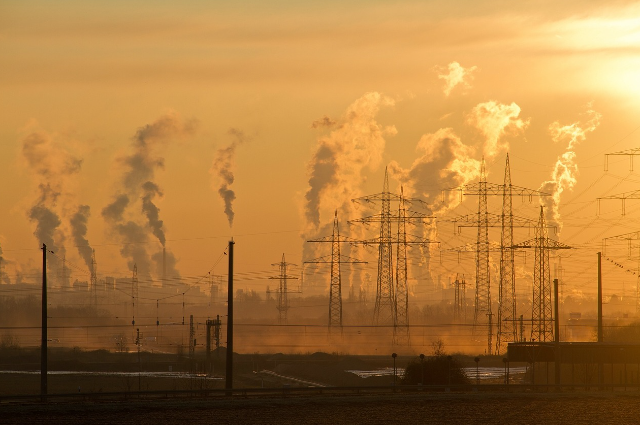
As we have the fastest growth also have the fastest death rates. India has one of the fastest-growing economies in the world, and better service quality management offers an opportunity to further accelerate growth.
If India had reached safe air quality in 2019, its GDP would have increased by $95billion.This is because cleaner air would result in lower rates of absenteeism from work, higher productivity at work, and fewer premature deaths.
India’s air pollution rates 51% caused by industrial pollution, 27% by vehicles, 17% by crop burning, and 5% by other sources. It contributes to about 2 million premature deaths every year in India.
Of the world’s 30 cities with the worst air pollution, 17 are in India. The capital, Delhi, usually experiences smog over fog, which sets in for the winter season, especially around the country’s biggest festival, Diwali. The air becomes thick and brown with visible pollutants. To breathe in is to inhale toxic fumes. India burns tenfold and fuelwood every year than the United States.
For a decade, Delhi, the Capital of India, has regularly held the dishonourable title of being the world’s most polluted city, with the other cities of India closely behind.
Every year, more car, more buildings, more factories replaced by taking the lives of more and more people. Do our lives cost cheap than the depreciating assets and improving infrastructure?
This week, Delhi’s air quality index (AQI), which indicates the level of pollutants in the air, went as high as 1,700 in some parts of the city. Even at the worst point of Beijing’s pollution crisis, the highest AQI was reached at 1,300. Despite the drastic health impacts, pollution is still not a major political issue in India, but it rarely features in election campaigns.
Indian government has taken necessary steps to address air pollution. It launched an ambitious clean air program to reduce particulate matter pollution by 30% by 2024, and the target was subsequently revised to 40% by 2026.
Remote sensing
Remote sensing technology is a new way to measure vehicle emissions in real time, rather than in laboratories. The true initiatives study in Delhi and Gurugram, India, reveals that motor vehicles emit far more in the real world, compared to lab tests. The study calls for an accelerated transition to zero-emission vehicles.
Stubble burning
Back in 2009, due to a change in legislation which resulted in to had a short turnaround between harvesting their rice crops and planting wheat. The quickest and only possible way to remain cheapest is to prepare the fields is to burning them, this term is called stubble burning. And this practice was made illegal in 2015, but still continues, though somewhat abated. This practice has contributed up to 50% of Delhi’s pollution in the early winter period. It has come down to about 30%.
Millions of cars, scooters, and auto rickshaws on Delhi’s roads are the worst emitters of PM2.5, the deadly small particles that pose a particular health risk. But there are some better options than prioritising personal vehicles. The metro is seen as poorly connected and expensive, and the bus system is underfunded and overloaded.
Major Health Impacts
Air pollution is a major cause of premature death and also the reason for many diseases like respiratory diseases, cardiovascular diseases, cancer, neurological disorders, and metabolic disorders.
RESPIRATORY DISEASES
Being exposed to air pollution over a long period of time can cause conditions like asthma, chronic obstructive pulmonary disease (COPD), and pneumonia is also a condition, which are as notable contributors associated with air pollution deaths in India. Lung cancer is also linked to tobacco use, as well as air pollution is a significant risk factor.
The sources are vehicular emissions, industrial pollution, and crackers' smoke
CARDIOVASCULAR DISEASES
Air pollution with fine particulate matter of PM2.5 is a significant risk factor that increases the risk of atherothrombosis, coronary syndrome, stroke, heart failure, arrhythmia, and sudden cardiac death. Atherosclerosis can be caused by increasing blood pressure.
Inhaled pollutants can cause oxidative stress and inflammation in the lungs that may spread into the cardiovascular system, leading to endothelial dysfunction, plaque instability, and an increased rate of acute syndromes.
CANCERS
Air pollution is associated with increased risk factors of various cancers, like lung, bladder, breast, and gastrointestinal cancers. Exposure to air pollutants triggers inflammation and oxidative stress in the body, which are the key contributors to cancer development. Pollution may interfere with the body’s ability to repair damaged DNA. Air pollution can alter the immune response and result in tumorigenesis.
In lung cells, pollution can induce a state that fuels tumour growth, particularly in EGFR mutant lung cancer.
Strategies and actions
- To combat air pollution in India, a multi-dimensional approach is required.
- Utilising the sources of clean energy like solar, wind, and geothermal energy.
- To introduce cleaner and alternative fuels like CNG and LPG. Can promote ethanol blending in fuels.
- Improve traffic management and reduce reliance on personal vehicles.
- Encourage the use of public transport and mobilise the limit no of personal vehicles. Instead, switch to carpooling, walking, and cycling.
- Develop green corridors along highways and transportation lines.
- Implement robust waste management systems to prevent open burning and landfill fires.
- Planting more trees to absorb pollutants and to produce oxygen.
- Avoid burning plastic, garbage, or dry leaves.
- Maintain vehicles properly to reduce emissions.
- Reduce energy consumption at home and work.
- Consider indoor air quality by sealing gaps in windows and using indoor plants.
References
- Clearairfund.org
- Guardinan.com
